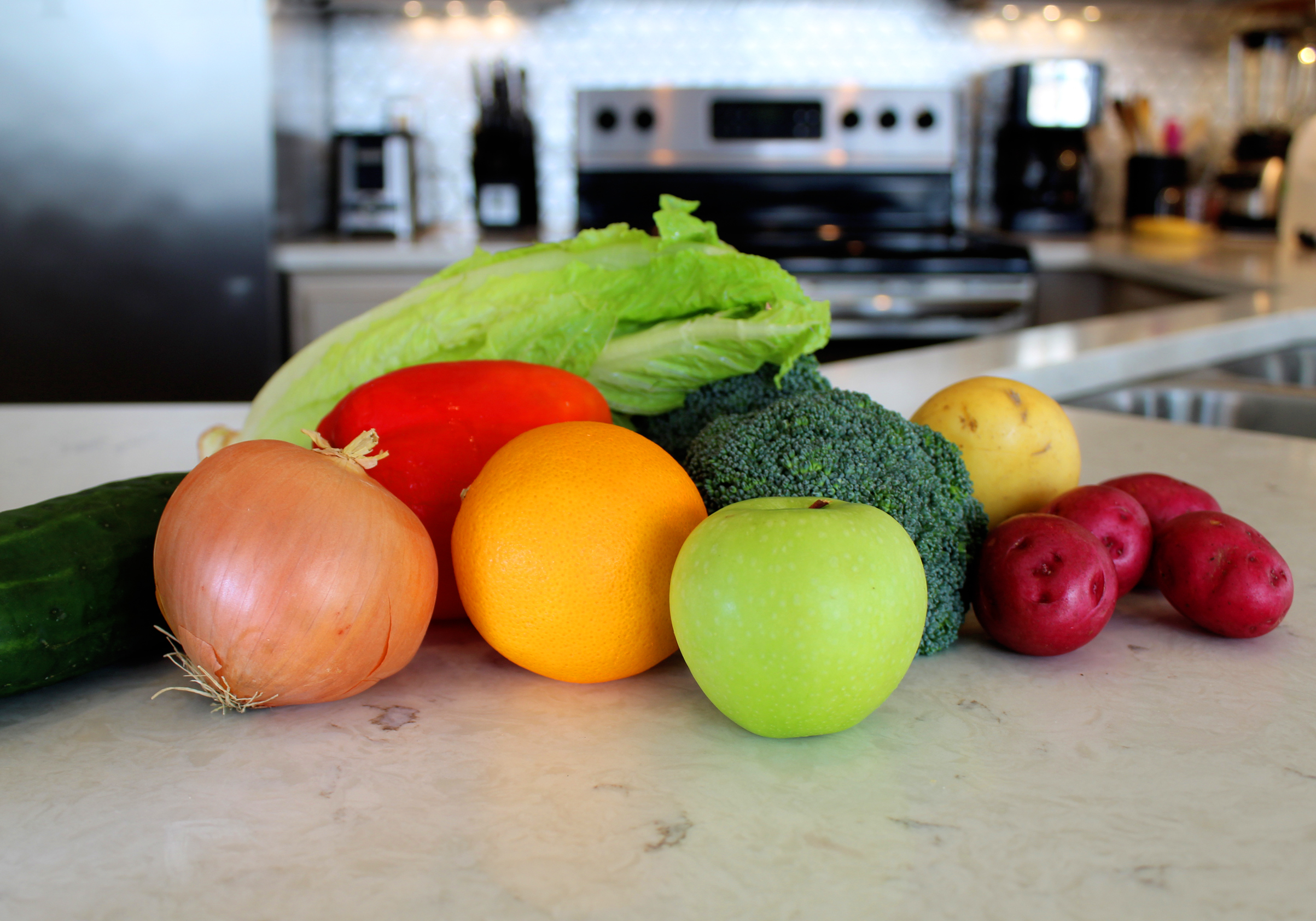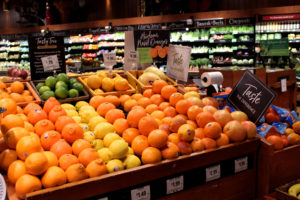Snowbird Meal Planning

Snowbird Meal Planning
In the past, I didn't truly understand what the concept of meal planning entails. I had heard of it, but wasn't curious enough to dig deeper. To make it worse, I certainly didn't put much thought into what I would be making for dinner on any given night. Sure, I prepared a shopping list, but there wasn't any urgent need to plan meals in advance -- until I became a midlife snowbird. And that's when it all started to come together.
Limited Space on a Timeline
Snowbirds are typically very organized by nature. Planning one's pantry, freezer and refrigerator is a calculated endeavor, not only due to limited space, but also budget, timing and the fact that snowbirds have to move out and go home at some point. After the first three seasons of stocking too much or too little, I'm still figuring it out, but one thing is certain. It's not easy to get it right. We've found it to be a common thread with long term, short term and veteran snowbirds.
Running errands, especially to the grocery store, is not how I like to spend time in my snowbird or Northern home. For me, it's worth the effort to strategize up front to reduce the need to run out for forgotten items throughout our stay.
First Half vs. Last Half
Basically, the first half of your snowbird stay should be highly calculated regarding stocking, consuming and restocking your pantry, fridge and freezer. The last half of your stay should be all about your strategy to use everything up.
A key element is timing your consumption, and if needed, sparsely restocking fresh produce, bread/bakery items or fresh meat/poultry/seafood, but not pantry or freezer items. You need to be eating those up at this point. As your departure date draws closer, stop buying anything unless it is essential and on your meal plan target list. Not only will you be eating out here and there, very likely you will be dining at your friends' places the last week or two as part of your "farewell tour" since they're also trying to pare down the pantry.
Shorter term snowbirds, especially, need to be smart about meal planning. Long term snowbirds should consider the last six weeks of their stay the critical time to start paring it down, especially the last three weeks.
Determine Your Recipes and Meals
For the first week of our stay this season, I created lists of meals I plan to serve based on my tried-and-true recipes. Simple recipes are much better than the ones requiring an array of limited use spices and exotic ingredients. Save those for your Northern home. We purchased the key essential ingredients and ONLY the key essential ingredients to make our meals.
Seek Hardworking Ingredients
Find the hardest working ingredients that can multi-task. As an example, we have whole milk Greek yogurt for our dog as a preventative measure to balance his sensitive gastro system. Instead of also buying sour cream, I now use Greek yogurt in the place of sour cream. And to my surprise, it tastes amazing!
Because I prefer to make my own sauces and salad dressings, I chose red wine vinegar instead of buying plain distilled white vinegar plus specialized vinegar like at home. We bought only Dijon style mustard instead of purchasing Dijon and yellow mustard. The extra "two in one" eliminates extra bottles and extra costs. We bought a couple bottles of barbecue sauce and truthfully, one is enough. Or just buy ketchup and use it to make your own BBQ sauce, cocktail sauce, fry sauce, sloppy joe sauce and more.
Ironically, I've not seen micro-sized bottles of pantry items in our area, but there's definitely a niche market for it in snowbird communities. One item that is available in half sizes is boxed wine. But the price is the same as the full sized box, so there's no point unless someone simply can't bring themselves to throw out an unfinished larger sized box.
Shop Smart
Our second season, I made the mistake of accepting my husband's gracious offer to go to the grocery. It was the first day or two of our stay and he

generously wanted to get the groceries so I could stay with our road weary dog and unpack. Grocery shopping is not my thing, so I was happy not to go.
My husband, who is not the primary cook at our house, went to the store without a list or much of a plan. Well, that was an expensive exercise, since he purchased items he thought we needed, but in actuality, they weren't. I can't remember exactly, but it seems the grocery bill for that trip was in the $400+ range. That shopping trip, we ended up with full-sized bottles of sauces, salad dressing, condiments and too many multiples of the same types of food. There was no cohesiveness to the items we had accumulated in relationship to our recipes.
I despise wasting food, but we had to throw away an entire cooler of food (including the styrofoam cooler) plus many pantry items due to mismanagement that season. We were overly optimistic about timing and consumption, plus we underestimated the lack of space in our vehicle to take it home. Since then, I've become much savvier planning meals.
Designate Everything
As you start the final half of your stay, designate which items will be used for each of the specific recipes and meals. If you are fortunate enough to have space to take a box of pantry items home, terrific! I approach it as if no space is available to take anything home and if there is, all the better. Leftover space in our vehicle has never been a luxury to date. In theory, taking a cooler of food home sounds fine, but in reality it isn't the best idea unless you can eat all of it the first day on the road so it doesn't spoil. Therefore it would need to be pre-cooked food or items such as cheese and deli meat to make a sandwich on the road.
I recommend assigning days of the week to your meals as much as possible. At the very least, determine if you have the ingredients for approximately 10 - 14 dinners for the last 14 days of your stay. Put the list in plain sight so you can make adjustments and re-prioritize as needed. This should be happening at least two weeks prior to departure. Do your best with estimating leftovers, meals out and dining with friends.
Of course, many of the same meal planning strategies should be applied when preparing to use up your fridge food prior to leaving for your warm weather home.
Convenience vs. Price
Beach grocery stores and pharmacies are convenient, but the prices are higher and the products are customized to the needs of nearby residents and tourists. If you want sunscreen, coolers, t-shirts, beach towels and toys, souvenirs and so forth, the selection will likely be plentiful. Not so much if you want a broader selection of practical household items for the duration of your snowbird stay.
Another tip: do not do your food shopping at a major chain grocery store located near the beach unless you are prepared to pay much higher
prices. I've observed typically the price is a dollar or more higher per item and you may or may not receive the store's advertised discounted price. This year, we paid $250 the first trip out to the "beach" grocery for what should have cost about $120 at our grocery at home or at a local superstore. Ask for and take the time to sign up for a loyalty card in your snowbird stores. Consider driving a little further to a superstore where the prices will likely be more competitive.
Not all Superstores are Created the Same
Not even the superstores are all created equally. If we go to a major superstore that is about a 15 minute drive away, it is in an upscale area, but it is very small in size due to the local zoning restrictions when it was built. The locals affectionately call it "small mart." Because it's a beach superstore, customers will find a huge selection of fishing and sporting goods, plus beach items. Not so much for groceries and household items. So, I prefer a superstore of the same chain that is 20 minutes away because it is of the expected size and has a much larger variety with the best prices in the area.
Snowbirds spend a lot of money to live in a warm weather climate. Snowbird housing is the highest expense, followed closely by food/dining costs. I have found that meal planning combined with smart shopping is the most cost-efficient way to keep our snowbird budget under control.
An hour of planning can save you ten hours of doing.
--Dale Carnegie, American writer and lecturer
